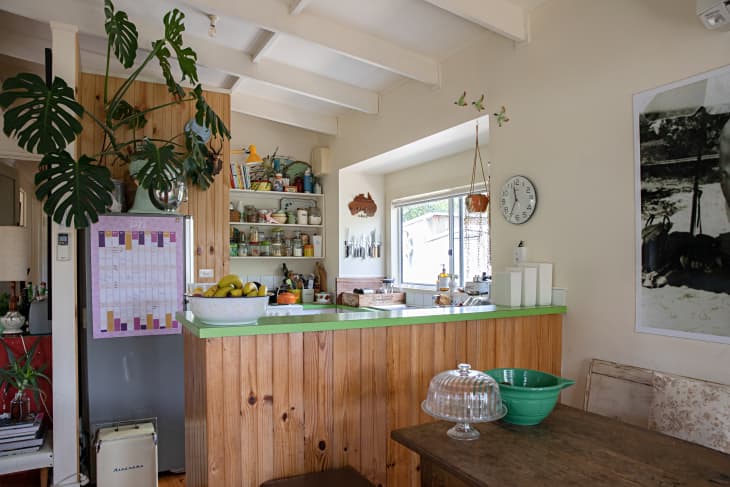This Wood Material May Be Controversial, but It’s Spot-On in This Retro Aussie Kitchen

There’s so much to love about Wendy and Fred Butterworth’s 1970s-era beach home in Anglesea, Australia. Vintage furniture from a bygone era, kitschy-cool beachy accents like surfboards and oars in the living room, and tons of charming original ’70s details. Their home is totally unique to them — layered with pieces that feel collected over time — and you get the immediate sense that their aesthetic choices have a story. One design choice that particularly stands out, though, is the use of knotty pine on the kitchen peninsula.
Let’s be honest: Pine gets a bad rap. It’s quite a bit softer than hard woods like oak, walnut, or maple, and it’s often characterized by the large, dark knots in the grain. The knots aren’t really a problem, per se, but this species can yellow over time with exposure to sun depending on how you finish it, which isn’t always ideal. That said, knotty pine is much more affordable than the more sought-after hard woods and readily available at home improvement stores. It can also develop a rustic patina with age, and with a decent whitewash and finish, it also won’t yellow nearly as much as you’d expect, so if you’re picturing polarizing wood paneling from bygone eras, think again.
The Butterworths decided to wrap their kitchen peninsula in pine boards, using it almost like tambour, fluting, or beadboard wall covering. In my opinion — and I’m guessing in theirs, too — this design move adds a warm, rustic touch to an otherwise retro space. In more more contemporary modern homes, the pine might feel out of place for its down-to-earth vibe, but here, the cladding coordinates well with the couple’s taste in decor, which leans heavily into antiques with years of patina (storage cabinets, farmhouse accents, floral quilts, for example).
These Aussie homeowners aren’t afraid to mix wood tones either, with lots of light, dark, warm, and neutral wood tones scattered throughout the house and even just in the kitchen space alone. The addition of the pine boards is tactful though; not only do they visually break up the kitchen from the dining room, but they also create a sense of cohesion in the eclectic space because they jibe so well with the decor there. In sum: Even the most humble/controversial materials can be successfully integrated into a home with a little imagination, vision, and purpose.